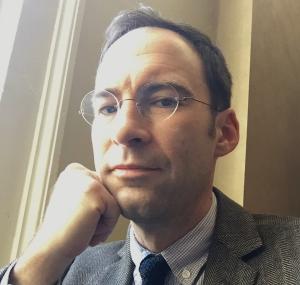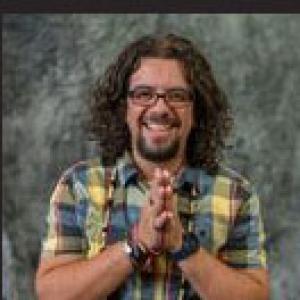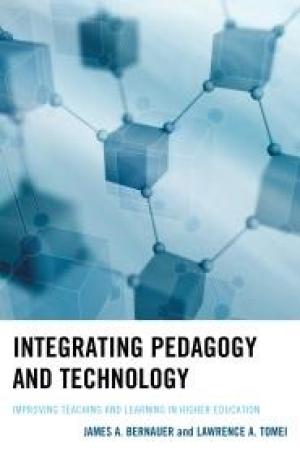Resources

Sophie Gilliat-Ray Director Centre for the Study of Islam in the UK Cardiff University The Muslim populations of most Western societies have grown over the last two decades as a result of immigration and conversion to Islam. This has drastically changed the landscape in which teaching and learning about Islam.

Nancy Lynne Westfield Associate Professor of Religious Education Drew Theological School Teaching for racial equality, and against oppression, has meant coming to grips with what my adult students (domestic and international) do not know, i.e. the basic concepts of race and the mechanisms of racism in the United States. Teaching

Nancy Lynne Westfield Associate Professor of Religious Education Drew Theological School We teach with aspirational dreams for our students. The right-now challenge of student formation is that we have never seen our world just-so. We are intellectual, faith pioneers in the malaise and luxury of the 21st century. This digita

Caleb Elfenbein Assistant Professor Grinnell College It is probably safe to say that most of our students have not known a world without the war on terror—perhaps more appropriately called the war of terror, for the call and response of violence from September 2001 onward has left at least one.
Workshops & Colloquies The Wabash Center hosts workshops for teachers of theological and religious studies in higher education in an accredited seminary or theological school in the United States, Puerto Rico, or Canada. Important Links Payment of Participants Policy on Full Participation Travel and Reimbursement Guidelines Reimbursement Form Things To Do In Crawfordsville Honorarium Participants in Wabash Center workshops receive an honorarium based on the number of days and amount of advance preparation and responsibility. Processes and Procedures for the Payment of Honorarium Policy on Deadlines for Program Deadlines The program deadlines are meant to facilitate application by a wide array of participants, as well as create fairness in the selection process. Program deadlines also assist administrative staff who work to support each group and all programs. The Wabash Center will, when we see the necessity, extend the deadline of an application process. We will rarely, if ever, extend the deadline for individual requests. We ask participants, as well as recommenders, to respect these important deadline boundaries. Adherence to deadlines foster fair-mindedness and a spirit of collegiality. Should an issue need to be arbitrated, please be in touch with the Director of the Wabash Center. 2026 Teaching and Learning Workshops Early Career Hybrid Workshop: Reclaiming Joy and Authenticity in Teaching Early Career Hybrid Workshop: From "The Grind" to "The Work Your Soul Must Have" Hybrid Workshop: Faculty of Asian Descent 2025 Colloquies JoT Colloquy 2025 Teaching and Learning Workshops Early Career Religion Faculty Teaching Undergraduates (Hybrid) Early Career Theological School Faculty (Hybrid) African Diaspora Community as Classroom Sacred Self-Care Benediction Past Gatherings See a complete list of Wabash workshops, colloquies, and conferences with a group photo and list of participants.

Cláudio Carvalhaes Associate Professor McCormick Theological Seminar I am delighted to be writing this blog with two other fantastic teachers I admire greatly: Lynne Westfield and Tat-siong Benny Liew. The Wabash Center has been a fantastic place that has empowered so many teachers, and has expanded resources and possibilities for
Submitting an Application for a Wabash Consultant Please submit the following materials through our online application process: Contact Information Preliminary Project Description Statement Letter of Support from your Department Chair, Dean, Provost, or President Assignment Process for a Consultant After receiving a school’s application, a consultant will assist the contact person to refine and clarify the nature, scope, focus and duration of the consultation. This may take two or three conversations. Once refined, the consultant will work with the Wabash Center staff person to draft a letter of agreement detailing the consultation. The letter of agreement will be sent to the school’s contact person for signature. The work of the consultation will then proceed and must remain within the boundaries of the letter of agreement. Should changes in the agreement be necessary, the letter of agreement will need to be amended. Note: The Wabash Center provides the stipend for the consultant’s work. In the rare instance that a consultant travels to a campus, the Wabash Center will also provide travel for the consultant. All other costs (e.g., resources, hotel lodging, food) associated with the consultation are the responsibility of the school. Contact Information We need information about the school, the primary contact person for the consultation, your Dean, Provost, Principal, or Department Chair (whoever coordinates the faculty members you wish to invite to the consultation), and an additional committee member who will be helping to plan the consultation. Given the three areas of focus (Consultant Program foci), from which area are you seeking support? Please be specific. The Project Description Statement - no more than 3 pages, single-spaced Your Statement Should Address the Following: Describe the presenting problem, concern, or issue that has been identified for a consultation. How does it align with one of our three stated foci above? What is the importance of this topic or issue in your context? What outcomes are desired from the consultation? Be specific. Note any other institutional initiatives in which you are participating and their relationship to this request (such as other grant projects, an impending accreditation visit, or a past workshop or consultation). Describe your institutional context by providing a succinct profile of your school or department (such as the type of students, number of faculty, typical teaching load). Provide the current priorities of the school and any other factors that may influence the design or goals of the consultation. Charting or graphing these materials is encouraged. Identify the people who have committed to work on the issue or concern and who will be directly involved with the consultation and who will help you develop the follow-up steps. Let us know how much support you have for addressing this problem, both from the institutional side (e.g., staff and administrators, trustees, other stakeholders) and by other faculty members. Projected Possible Dates: Please indicate any flexibility you have on the range of dates that you supplied in the application. Each context is unique. Provide us with any additional information we might need to know to better support your consultation. Letter of Support Please attach a letter of support from the Dean, Provost, Principal, or Department Chair that you have consulted about this application. Ask them to address the question of institutional support for addressing the problem that you have named and how it relates to other institutional initiatives. Login to Application Form The Online Application Process 1. The first step in the online application process is to establish an online account. You will be prompted to type in your email address and provide your own password. 2. You may “Hold” your application at any time if you need to gather additional information and complete the application later. 3. Your application will not be submitted to the Wabash Center until you click on the “Submit” button at the end of the process. 4. Once you have logged in, you will be prompted to select the type of application you wish to use. For the Consultant program, click on the “Consultation” button. 5. You will be prompted to enter the required contact information and to attach the Project Description Statement and Letter of Support. 6. We recommend you print the application for your own records by selecting “Print” from your browser’s File menu (if you have Firefox, use the pdf button). Questions and More Information: Nancy Lynne Westfield Director westfiel@wabash.edu 800-655-7117

This collection of ten essays examines globalization (the radical diversity and complex interconnections that characterize the present state of human existence in the world) and offers various methods for teaching and doing Christian theology in this context. Globalization has arisen, in large part, from the colonial expansion of western European nations, through trade and commerce, migration, travel, and mass communication, and has resulted in a crisscrossing and blurring of national and cultural boundaries (12, 40, 145). The first century Marcan imperative for Christians to “go into all the world” that was at first aspirational is now the reality of Christianity in the twenty-first century. The collection is divided into three sections. Part I defines globalization and encourages theological educators to take seriously not only the current pluralism in the world but also the diversity within Christianity both presently and historically (14, 29, 46). Part II examines the concept and practice of theological education, inclusive of methods for encouraging seminary students’ positive engagement with persons of other faith traditions (104). Part III goes further to suggest how theological educators can enable their students to achieve a deeper understanding of being and acting as persons of faith in global community. Just as important as the divisions of the collection are the prominent themes in this volume of essays. Some of these themes are: intentionality in seeking, welcoming, and appreciating encounters with other religions (51, 92); the role of theology in public life in addition to its functions in Christian churches and communities (12); the importance and desirability of dialogue in teaching theology as well as in the encounters between different religions and cultures (42, 54, 83, 109, 150); the enhancement of systematic theology and theological education through comparative studies and comparative theology (47, 100, 104, 109); the interrelatedness and mutual influences between local settings and global networks (79, 146, 165-166, 173); social justice as the common good and essential feature of global community (58-59); and global citizenship as participation in global networks and responsibility for improvement of the same by exposing and challenging systems of oppression and by working for social justice (59, 67, 88, 126). The collection represents a noteworthy start to critical reflection and modifications in teaching Christian theology in light of the diversity and pluralism resulting from globalization. The essayists describe their use of pedagogical tools such as field trips (51), sacred texts from various religions (52), roundtable discussion (152-160), service and study abroad (81-84, 169), non-western cultural sources (92-99), comparative studies in religion (52, 100), music and language arts (117-120), and autobiography for reconstructions of identity (78, 168-171). Further work is needed in analysis of the shifts within Christianity itself. Several of the essayists acknowledge that demographic shifts are tilting the population growth of Christianity towards the Global South – Africa, Asia, and Latin America. One essayist asks the question: What new or alternative interpretations of Christian doctrines will emerge in these areas? (38). Postcolonial theologies are already taking shape. Christian theology in the future will likely be the product of mutual learning between the Global South and the Eurocentric Global North.

If your school is in the process of transitioning to online learning, Integrating Pedagogy and Technology may be the only book you need – it certainly should be one of the first you read. Bernauer and Tomei’s work is brimming with very useful information for schools in transition. The authors have devised what they call an “Integrated Readiness Matrix” (IRM) to assist institutions both in discerning how ready their faculty may be for this change and in moving them toward greater technological and pedagogical proficiency. “The goal of the IRM and this textbook is simple: move higher education faculty incrementally from lower left quadrants to more advanced upper right quadrants” (80). Considering how best to integrate technology into instruction “requires all faculty to be conversant with the theories of learning, the taxonomies and domains of learning, a new methodology for preparing and developing college faculty for a career of classroom teaching” (vii). The book includes a chapter on educational psychology, exploring the unique features of five pedagogies: behaviorism, cognitivism, humanism, constructivism, and connectivism. It builds to address taxonomies of learning, pedagogical skills and competencies, and technological skills and competencies. The lists of competencies and learning objectives for faculty development in chapters eight and nine are worth going over with faculty even by themselves. The authors, from Robert Morris University in Pittsburgh, model educational theory, using advance organizers at the beginning of each chapter, for example. Chapters may end with review sections, indices of concepts addressed in particularly complex chapters, suggested readings, and so forth. The preface introduces preconditions for using the Integrated Readiness Matrix, which is considered “sufficiently valid and reliable to serve as a basis for faculty self-assessment and professional faculty development,” to determine where each faculty member’s pedagogical and technological skills need bolstering (vii). Another strength of this book is its applicability to various kinds of learners and institutional contexts. This material is valuable whether you are teaching undergraduates, graduate students, or other adult learners. Your field does not matter; this is not one of those texts where everything must be translated in order to be useful to theological or religious-studies faculty. Reflective teachers and institutional administrators concerned about how to develop faculty competencies will both find appropriate and important resources here. Many institutions of higher learning are already in the process of transitioning to more online offerings. But this often happens in a haphazard, unorganized way, leaving certain faculty to carry the technological burden for the entire institution. Alternately, online expectations are introduced or imposed, but faculty are not empowered and trained to make the best use of technological tools, or pedagogical considerations do not enter the discussion. This book can be used to assist entire departments in training faculty, generating conversation about the pedagogical sophistication necessary to use technology well, and balancing technological and pedagogical considerations while transitioning to online learning.

Invoking the name of the “Common Core” effort to establish national K-12 educational standards in its title, this is not a text directed primarily at college educators. It is important to ask, therefore, whether the authors’ approach is broad enough to answer the needs of the college classroom and whether their approach to teaching writing is of any use to the professor of theology or religious studies. The answer is “yes” to both. In an effort to “mine the gold” in the Common Core writing standards, Murphy and Smith identify six big ideas: teaching writing as a process, integrating the language arts, extending the range of student writing, spiraling and scaffolding, and collaborating. The emphasis on writing as process informs their entire project and the other themes are treated in individual chapters. Preparation for the book included conversations with “dozens of teachers,” with some “college teachers in the mix” (7). The second chapter provides a sample lesson plan and commentary designed to integrate the language arts; that is, reading, writing, speaking, and listening. Among the chapter’s helpful charts is a list of “strategies for writing with specifics” including “details,” “examples,” and “active verbs” (23). One can imagine a professor drawing from this list when helping a student enhance vague writing. Ideas for building student vocabularies and building community are equally transferable to the college environment. The third chapter takes on the challenge of extending the range of writing and acknowledges the difficulty students have when transitioning from descriptive to argumentative essays. With vignettes, ideas for writing exercises, and samples of student writing, the authors are able to provide some insight into the ways students struggle and how one might build bridges to help. In a particularly thoughtful college-level example, the professor has her students read exemplar restaurant reviews and collaboratively design a grading rubric based on the effective strategies observed in these reviews before writing their own. The fourth chapter examines how the pedagogical practices of spiraling and scaffolding produce better writers. By spiraling, the authors mean revisiting key concepts repeatedly at different layers of complexity. By scaffolding, they mean any temporary practice exercises or assistance intended to sharpen students’ skills. Within a list of examples is the suggestion that students spend some class time focusing on a single quote that supports their argument and assessing how to connect it to their own ideas. Reflecting on collaboration, the fifth chapter describes student-to-student, teacher-to-student, and teacher-to-teacher collaborative strategies. Drawing on the theme of collegiality, the authors use their final chapter to consider how teachers can best produce positive institutional change. This is the principle of the book as a whole: effective teaching practices should be sought among effective teachers. This slim volume will be of great interest to college educators. It provides meaningful insight into the struggles students experience when transitioning from high school to college writing and practical advice on how to help.
Wabash Center Staff Contact
Sarah Farmer, Ph.D
Associate Director
Wabash Center
farmers@wabash.edu